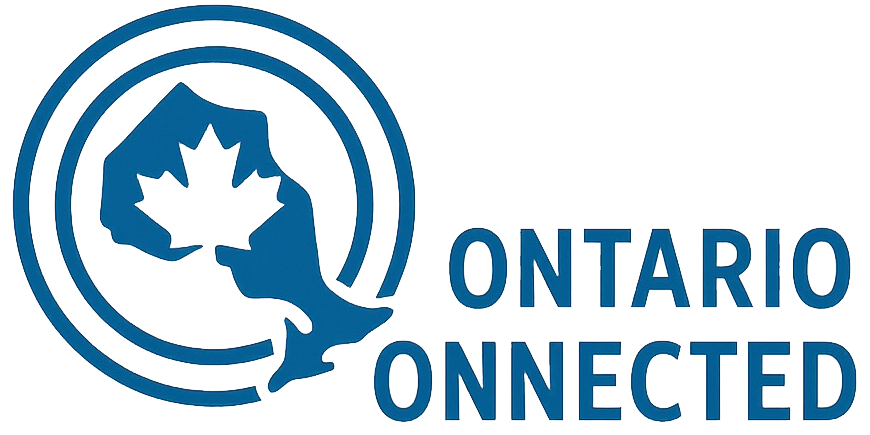Ontario Connected – Frequently Asked Questions
Ontario Connected is a 50-year vision to solve Ontario’s transit and housing challenges. It proposes building deeper subway tunnels, regional high-speed rail links, and integrated underground hubs that combine housing, retail, healthcare, and education — creating a connected future for all Ontarians.
Ontario’s population is projected to grow by 50% by 2051, yet our infrastructure is still built on mid-20th century foundations. Subways are overcrowded, highways are jammed, and housing is unaffordable. Without bold, long-term planning, congestion, costs, and inequality will only get worse.
Surface space in Toronto and the GTA is already occupied by utilities, sewers, pipelines, and existing transit. By building multi-layered tunnels below current subway lines, Ontario can avoid conflicts with existing infrastructure and unlock space for express lines and relief routes — without disrupting the city above.
Transit and housing go hand in hand. By creating underground hubs connected directly to high-speed transit, Ontario can support affordable student housing, temporary accommodations, and sustainable communities. Above ground, this preserves green spaces, farmland, and natural reserves.
Funding could come from a mix of:
- Public investment (provincial + federal).
- Infrastructure bonds dedicated to transit.
- Partnerships with municipalities.
- Innovative financing, including land-value capture around new hubs.
Indigenous voices must be part of the planning from the very beginning. Ontario Connected recognizes that all development happens on traditional lands, and consultation with Indigenous communities is essential to ensure equity, respect, and partnership.
For decades, Ontario has been stuck in cycles of short-term, election-driven projects that often fail (like delayed LRTs under P3 contracts). Ontario Connected is non-partisan and long-term, designed to outlast political cycles and deliver a generational plan instead of piecemeal fixes.
No — the vision prioritizes building downward, not outward. By moving development underground, we protect farmland, conservation areas, and green spaces for future generations, while still making room for people and growth.
Public input is vital. Citizens can:
- Share ideas in blog comments.
- Join community discussions.
- Contribute data, experiences, and local knowledge.
- Spread the vision through social media.
Ontario Connected is a 50-year plan, but the first steps can begin today:
- Start planning and consultations.
- Pilot deep-tunnel relief lines in Toronto.
- Build initial intercity corridors (Toronto ↔ Hamilton, Toronto ↔ Ottawa).
- Gradually expand into a province-wide network.
Large-scale projects will run into the billions — but congestion alone costs Ontario’s economy over $11 billion per year. Building now saves money long-term.
By building in phases, avoiding risky P3 models, and maintaining public-first transparency at every stage.
High-speed electric trains, capable of 250–300 km/h, designed for underground operation and climate efficiency.
Modern tunnel-boring machines (TBMs) already operate under cities worldwide (London, Paris, Shanghai). Going deeper avoids utilities and protects surface infrastructure.
Yes — the project integrates with Ontario’s clean electricity grid, making it one of the most climate-friendly investments possible.
No. Ontario Connected does not propose underground cities or permanent underground living. Instead, the vision is to create transit-linked hubs — compact spaces that may include affordable student housing, short-term accommodations, retail, healthcare, and education facilities — built alongside high-speed transit lines.
Fast transit allows Ontarians to live further from Toronto without losing access to jobs and services — reducing demand pressure in the city core.
Ontario Connected is designed as a non-partisan, generational plan. By making it public and engaging municipalities, unions, and residents, it builds pressure to continue regardless of elections.
All contracts and progress reports would be transparent, published online, with third-party oversight to ensure accountability.
By digging deeper tunnels, surface disruption is minimized. Lessons from London and Paris show it’s possible to expand without major city shutdowns.
Every major transit system we admire today — London Underground, Paris Metro, Tokyo — once seemed impossible. The ambition is exactly what Ontario needs to stop falling behind.
Highways induce more car use (“induced demand”) and worsen congestion. Subways and trains move far more people in less space, sustainably.
Still have questions?
Explore more of our vision, join the discussion, or reach out directly. Ontario Connected grows stronger with your ideas.
Stay Connected
Subscribe for updates on new posts, transit ideas, and project milestones.

